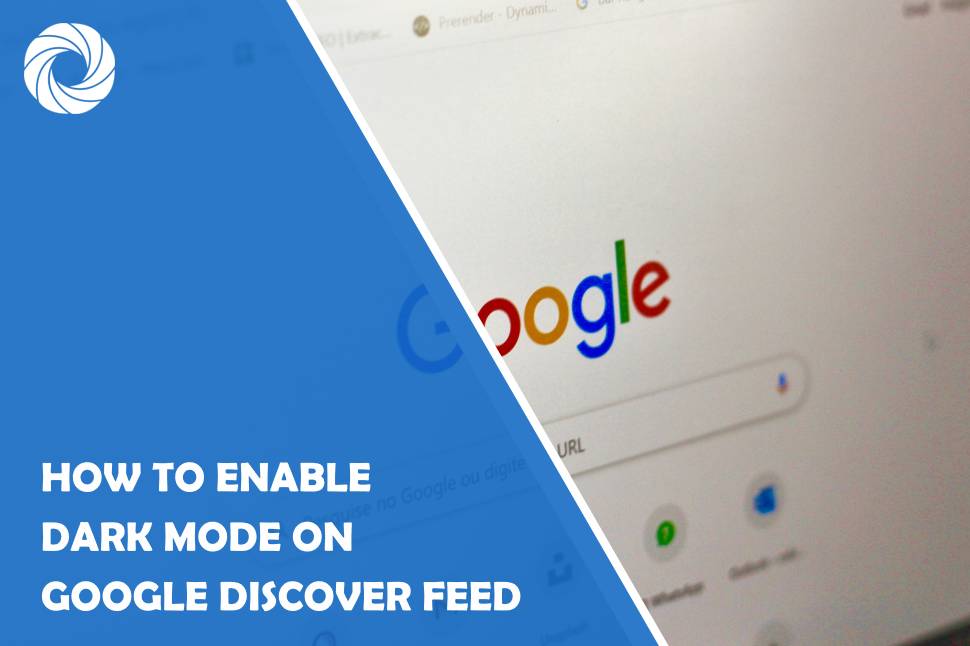In a world where our digital devices have become extensions of ourselves, the constant flood of information can sometimes be overwhelming. Amidst this sea of notifications and updates, finding moments of respite for our eyes has become crucial. Enter dark mode – the sleek, eye-friendly interface option that not only reduces eye strain but also gives your device a chic, modern look. If you're someone who revels in the allure of dark mode and finds solace in its calming aesthetic, then you're in luck! Today, we delve into the realm of Google Discover Feed to uncover the secrets on how to unlock the enigmatic allure of dark mode within this popular feature. So grab your device and get ready to embark on a journey towards a more visually pleasing browsing experience.
What is Google Discover Feed?
Google Discover Feed is a personalized content feed that provides users with a mix of news, articles, videos, and other online content tailored to their interests. It uses machine learning algorithms to analyze your search history, app usage data, location settings, and other factors to curate a unique feed for each user. This dynamic and constantly evolving feed helps users stay informed and entertained by serving up relevant content without the need for manual searching.
Enabling Dark Mode on Google Discover Feed can enhance the user experience by reducing eye strain in low light environments and saving battery life on OLED screens. By switching to Dark Mode, users can enjoy a sleeker interface that is easier on the eyes while engaging with their personalized content feed. With more people embracing Dark Mode across various apps and platforms, enabling it on Google Discover Feed adds a modern touch to your browsing experience and aligns with current design trends.
Enabling dark mode can significantly enhance the user experience on various platforms, including Google Discover Feed. Apart from giving a sleek and modern look to the interface, dark mode also has practical benefits. For instance, using dark mode can reduce eye strain, especially when browsing late at night or in low-light environments. This feature is particularly beneficial for individuals who spend extended periods of time on their devices.
Furthermore, enabling dark mode can help conserve battery life on devices with OLED or AMOLED screens. Since darker pixels require less power than brighter ones on these types of displays, using dark mode can lead to improved battery efficiency. By making this simple switch to dark mode in Google Discover Feed, users not only create a visually appealing browsing environment but also contribute to prolonging their device's battery life—truly a win-win situation for all tech-savvy individuals out there.
Steps to enable dark mode on Google Discover
To enable dark mode on Google Discover and enjoy a more comfortable reading experience, follow these simple steps. Begin by opening the Google app on your mobile device. Next, tap on your profile picture or initials in the top right corner of the screen to access the menu options. Then, select Settings from the menu list and choose General. Look for the option labeled Theme and tap on it to reveal three choices: light, dark, or set by battery saver. Finally, select Dark to enable dark mode on Google Discover.
Switching to dark mode not only reduces eye strain but also helps conserve battery life on OLED displays. Embracing this aesthetic change can enhance your overall browsing experience and make nighttime scrolling more enjoyable. Additionally, using dark mode may contribute to reducing power consumption in some devices, making it an eco-friendly choice for those conscious of their environmental impact while staying stylish and up-to-date with software trends like Google's Discover feed.
Dark mode, once regarded as a simple aesthetic feature, has now gained significant attention for its practical benefits beyond just the visual appeal. One notable advantage is reduced eye strain, especially when using devices for extended periods. The dark background with light text creates less contrast and helps minimize eye fatigue and sensitivity to bright screens.
Moreover, dark mode can enhance the overall user experience by improving readability in low-light environments such as at night or in dimly lit rooms. The softer lighting provided by dark mode also contributes to better sleep quality compared to the harsh blue light emitted by traditional white backgrounds. This transition from light to dark interface has proven to be not just trendy but also beneficial for both physical well-being and user comfort.
In conclusion, embracing dark mode can significantly enhance your browsing experience across various platforms, including the Google Discover feed. Not only does it reduce eye strain and improve readability in low-light environments, but it also offers a sleek and modern aesthetic that many users find appealing. By enabling dark mode, you can enjoy a more immersive and focused content consumption experience that ultimately leads to better engagement with the information presented.
Moreover, dark mode has been touted for its potential energy-saving benefits on devices with OLED or AMOLED screens. The darker interface requires less power compared to bright white backgrounds, potentially prolonging your device's battery life. This added practical advantage further underscores the importance and advantages of incorporating dark mode into your browsing habits. Overall, adapting to the trend of utilizing dark mode not only brings aesthetic benefits but also contributes to a more sustainable and efficient digital experience for users worldwide.
